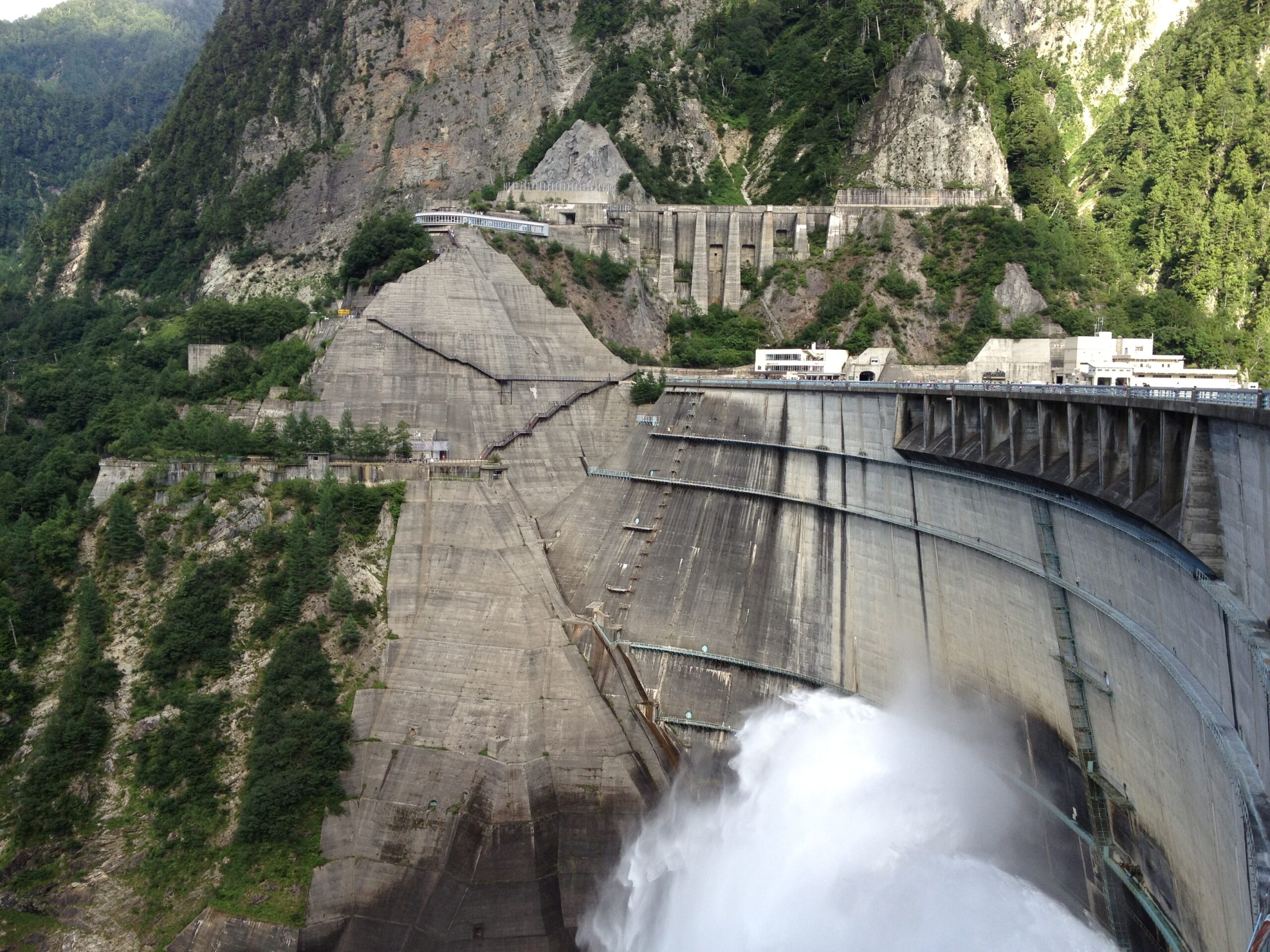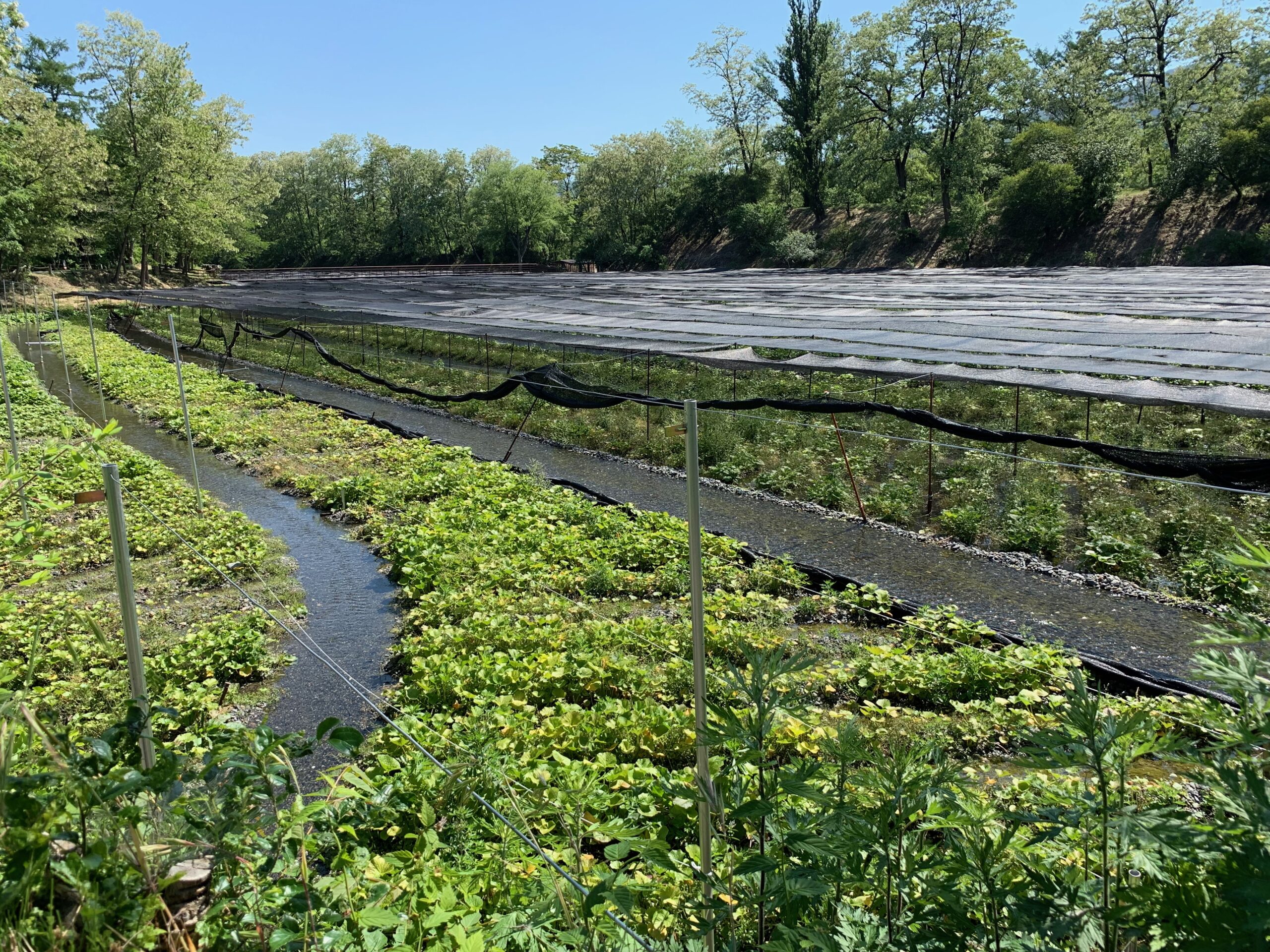We went to Senso-ji Temple in Asakusa, Taito Ward, Tokyo, at around 7pm in the evening.
Senso-ji Temple is one of Tokyo’s most popular tourist attractions, and many tourists from abroad visit the temple as well. The precincts of this temple are always full of life during the day. Walking along Nakamise-dori Street, you’d be under the impression that every fair stall in Japan is lined up here.
Senso-ji Temple seems to be always crowded, but at night the buildings on the temple grounds are lit up and have a different charm than during the day.
In this article we tell you what it was like to walk around the quiet precincts of Senso-ji Temple at night.
About Senso-ji Temple
The oldest temple in Tokyo
Senso-ji Temple is the oldest temple in Tokyo, founded in 628 during the Asuka period.
In the main hall of Senso-ji Temple, there is a small statue of Kannon (Goddess of Mercy). It is said that this golden statue of Kannon was caught by two fishermen in 628. We cannot see it because it is a secret statue.
Opening times of Senso-ji’ Temples main hall
Senso-ji Temple’s main hall is open from 6am to 5pm (from October to March it opens at 6.30am).
In the evening, the temple’s main hall and the souvenir shops along Nakamise-dori Street are closed. However, the buildings of temple are lit up until 11pm every day (*the time will be reduced when a state of emergency is declared), so you can still enjoy a stroll at night.
Senso-ji Temple lights up and sights in the precincts at night
Sightseeing in the Senso-ji Temple at night

Let’s take a walk around Senso-ji Temple at night. We’ll start at Kaminari-mon (Thunder Gate), the symbol of Asakusa, and walk towards the main hall.
Kaminari-mon, the entrance to Senso-ji Temple
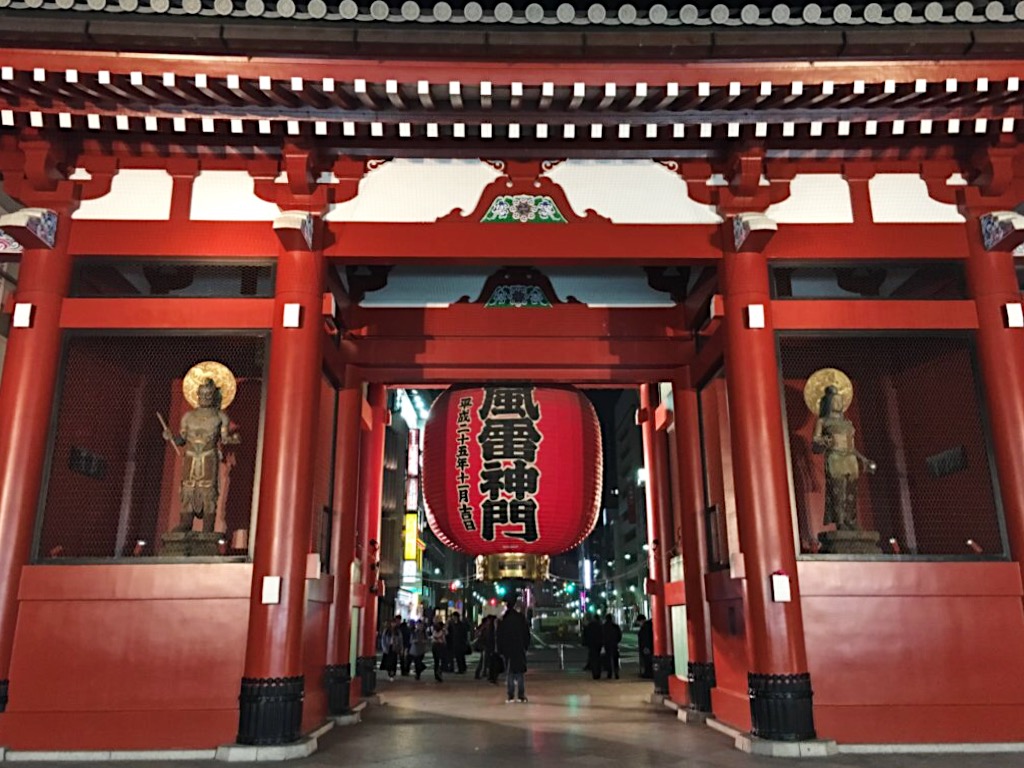
Senso-ji Temple is also famous for its Kaminari-mon (Thunder Gate). The official name of the gate is “Fu-Rai-Jin-Mon (Gate of Wind and Thunder Gods)”.
On the front side of the gate are the statues of the wind and thunder gods, and on the back side of the gate are the statues of the heavenly dragon and the golden dragon.
Nakamise-dori Street at night
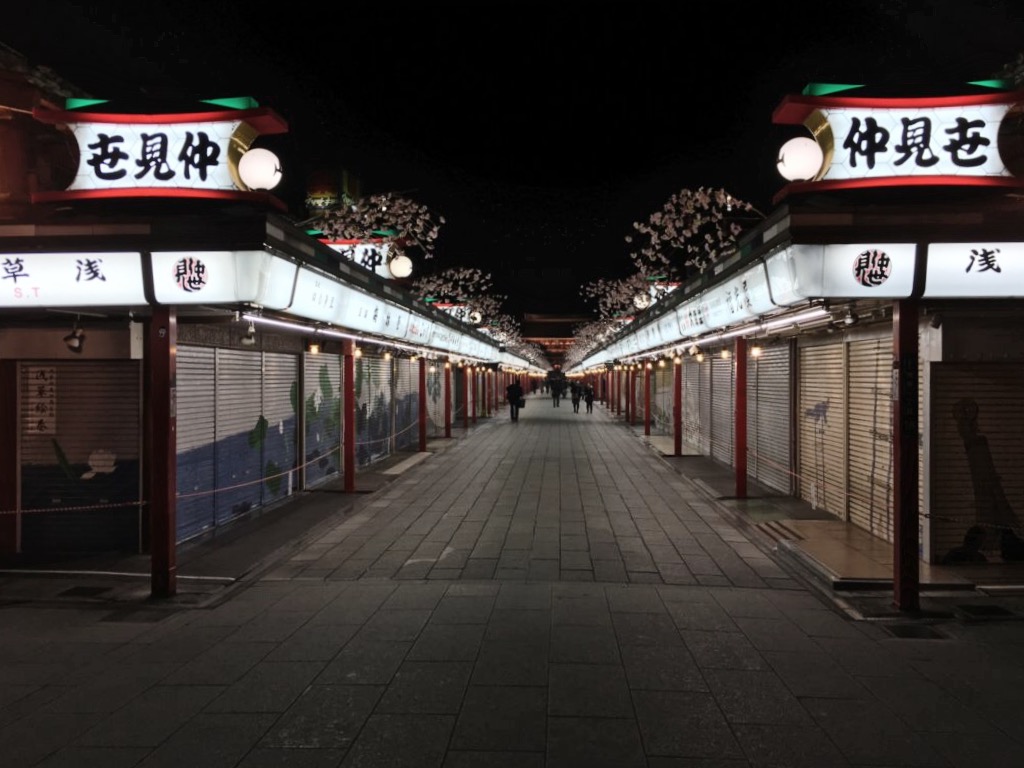
This is a picture of Nakamise-dori Street in the precincts of Sensoji Temple. Compared to the bustle of the daytime, Nakamise Dori at night is completely deserted and quiet.
On the Nakamise-dori Street, which runs from Kaminari-mon Gate to Hozo-mon Gate, there are many souvenir shops selling Japanese goods such as tenugui (Japanese cotton hand towel) and fans, and Japanese sweets shops selling ningyo-yaki (doll-shaped small pancakes), kaminari-okoshi (crispy rice crackers) and imokin (sweet potatoes).
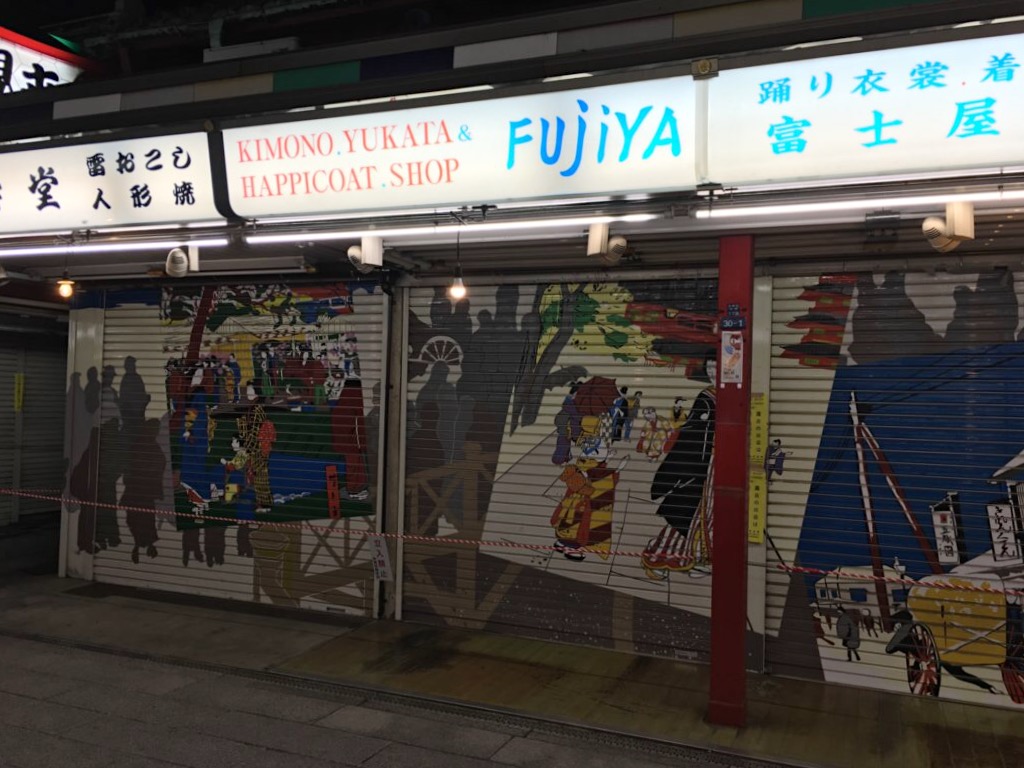
After hours the shops are already closed, but the street is lit by signs so you don’t have to walk in the dark.
Each shop has a colourful picture scroll painted on its shutter.
Hozo-mon Gate (Nio-mon)
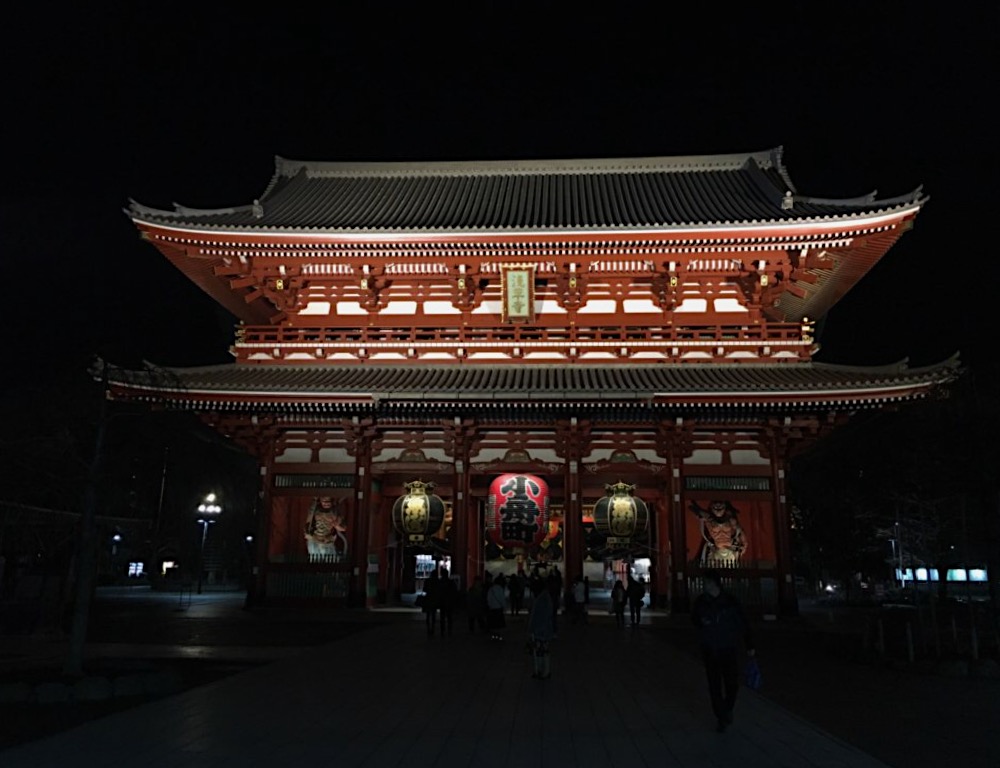
This large gate is the Hozo^mon Gate, located just past Nakamise Street.
Two statues of Kongorikishi are enshrined in Hozomon, one representing A-gyou (open-mouth) and one representing Un-gyou (closed-mouth).
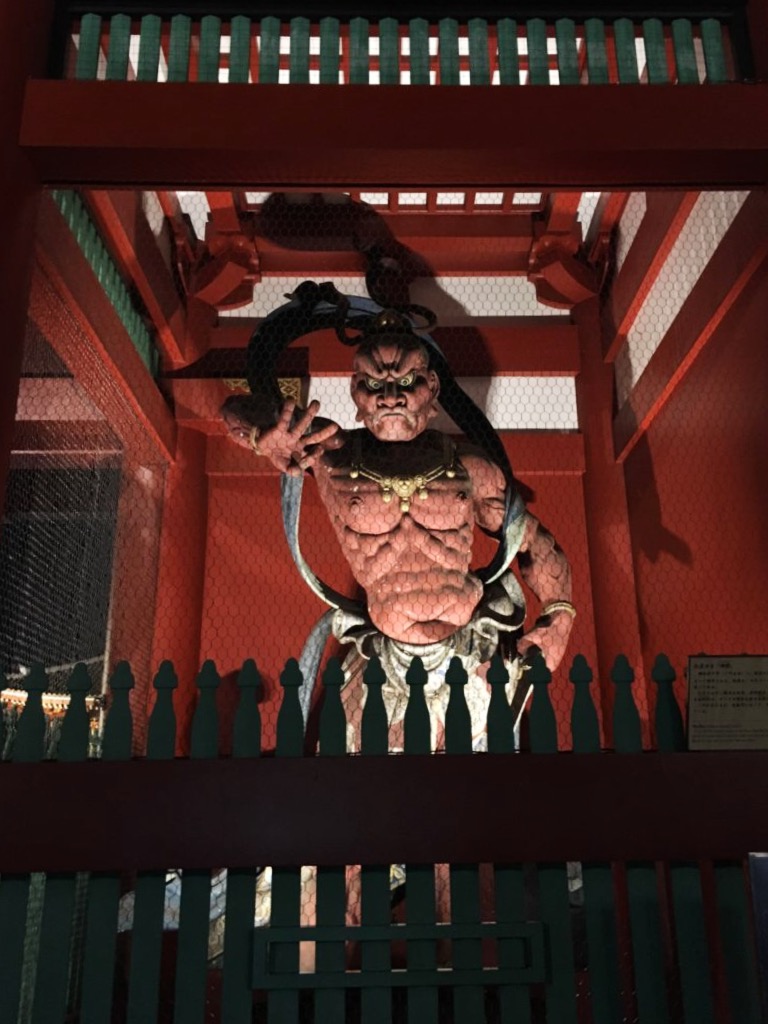
This is the statue of Kongorikishi called Un-gyou. Thanks to the lighting, it looks more powerful than in the daytime.
Hozo-mon Gate and Five-storey Pagoda lit up
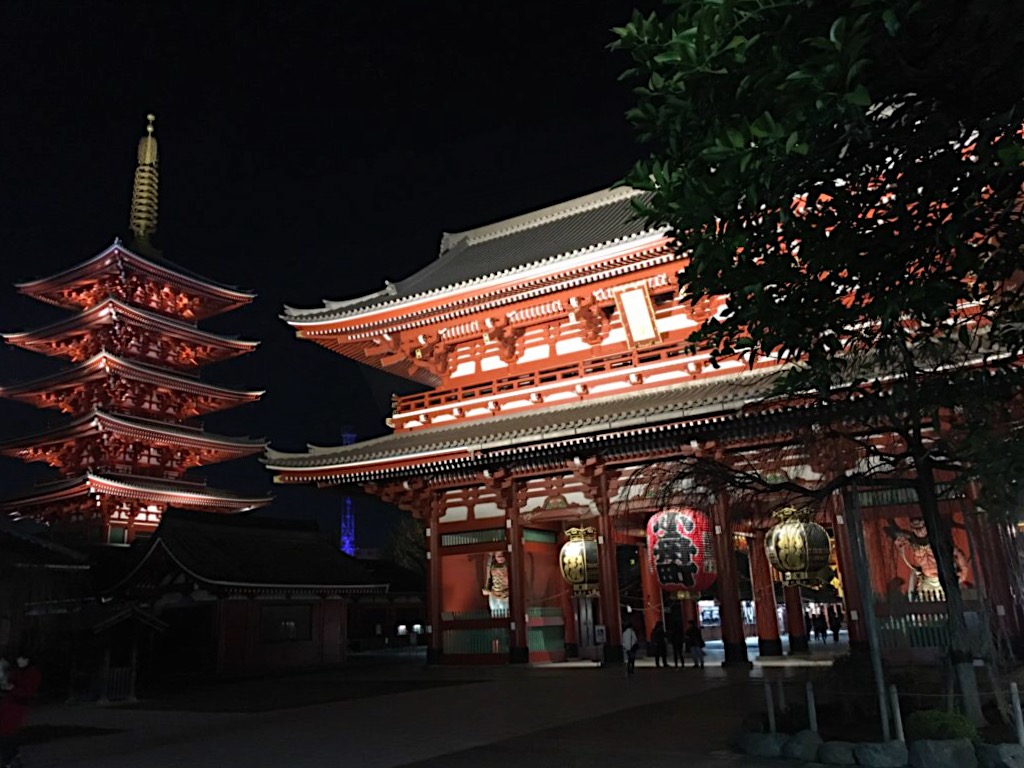
Next to the Hozo-mon Gate stands a five-storey pagoda, also painted in vermilion. Here you can capture the illuminated five-storey pagoda and the gate together on your camera.
A short walk through the Hozo-mon gate brings you to the main hall of the temple.
The main hall of Senso-ji Temple

This is the entrance to the main hall. Like the Kaminari-mon Gate, the main hall is decorated with large lanterns. The door of the main hall closes after 5pm, but you can still make a monetary offering at the entrance.
You can get a fortune at Senso-ji Temple even at night.
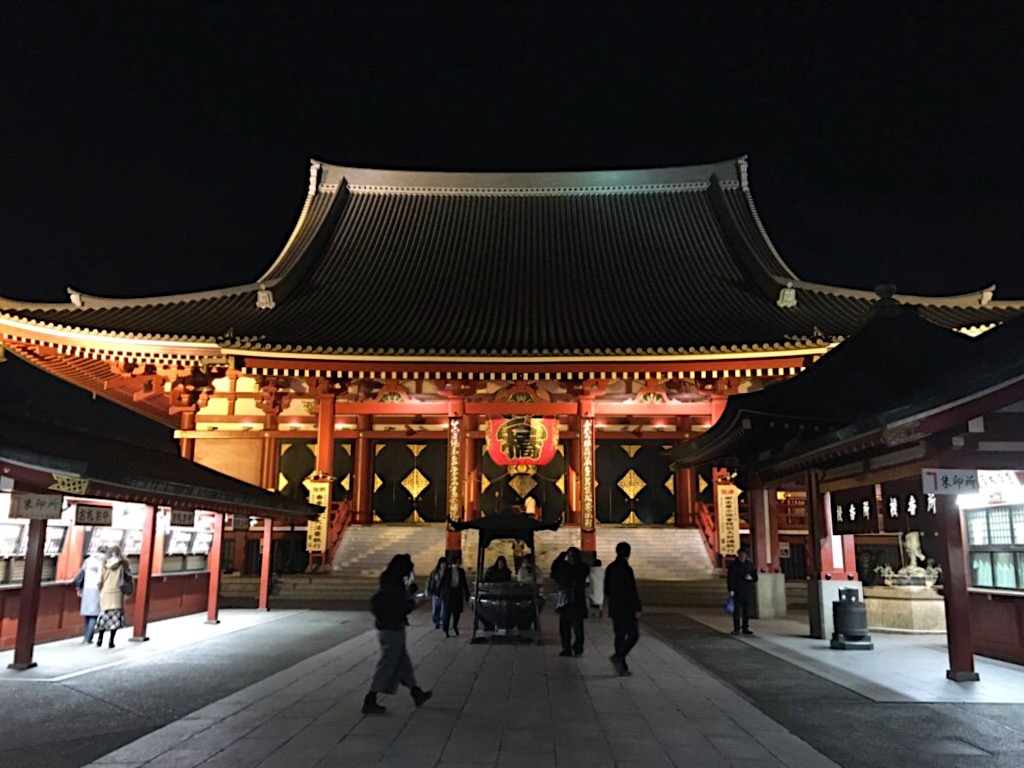
The main hall is closed, but you can still get your omikuji (fortune written on strips of paper) at night at the shrine office in front of the main hall.
At Senso-ji Temple, the omikuji is called the Senso-ji Kannon lottery, and after putting in 100 yen, you shake the omikuji box and pull out a stick. The stick will have one of the numbers up to 100 written on it.
Each drawer on the shelf in front of you is numbered, so take the piece of paper from the drawer with the number you drew. This will be your fortune slip.
By the way, the one I drew was Kichi (Blessing). On the paper of the fortune, there is an explanation in English and Japanese.
Nishi-sando Arcade
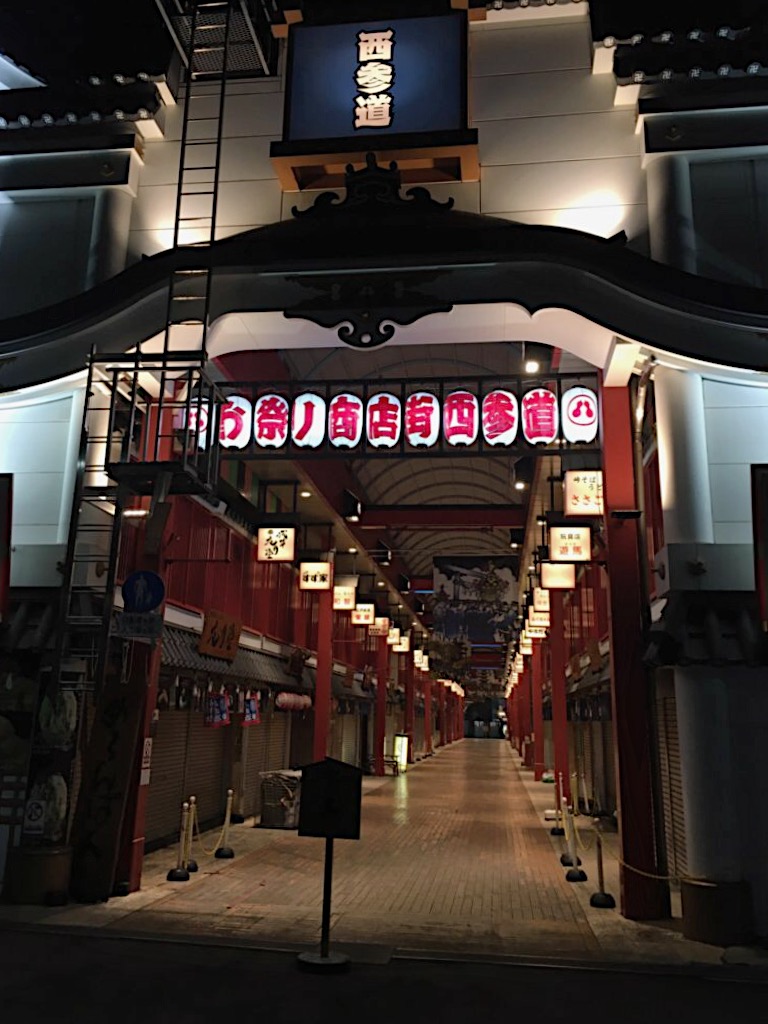
The Nishi-sando shopping arcade, right next to Senso-ji Temple, was also quiet after a day’s business as shown here.
Summary of Senso-ji Temple’s night time lighting
If you want to explore the place without the hustle and bustle, this is the place for you
If there was a list of places that looked different during the day and at night, Senso-ji Temple would be a definite contender, as it gives a completely different impression during the day and night.
You don’t have to queue up with the crowds and you can decide when to visit at your own pace. If you want to avoid the crowds and see the temple at its best, try to visit Sensoji at night.
PS: We are not in a situation to visit at the moment to see the lights, but we hope to return one day.
The shops on Nakamise-dori are closed, so you can’t buy souvenirs as you can in the daytime, but there were restaurants in the area where you could have dinner.
Access and parking to Senso-ji Temple
| Access | It takes about 3 minutes to walk from Asakusa Metro station to Kaminarimon of Senso-ji Temple. |
|---|---|
| Address | |
| URL | Official Website |
| Parking | No parking (pay parking in the area) |

